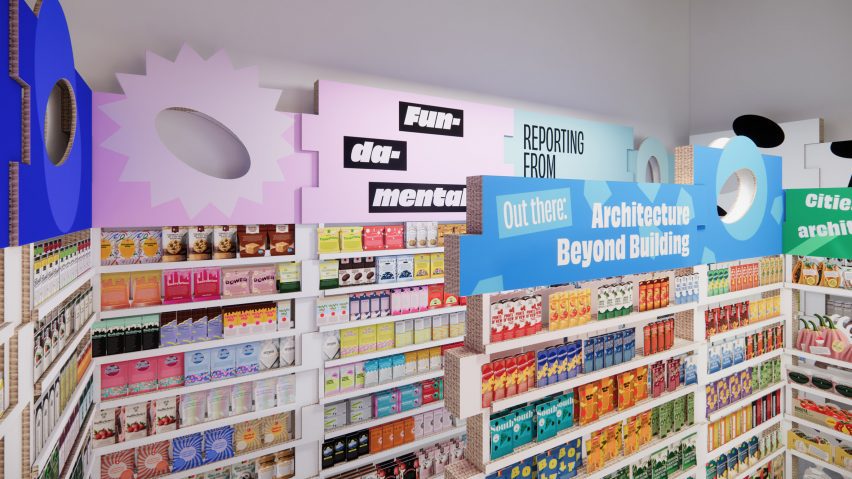
Latvia brings "supermarket-like atmosphere" to Venice Architecture Biennale pavilion
Fake tins, cartons and bottles line shelves in the Latvian Pavilion at this year's Venice Architecture Biennale, which takes the form of a supermarket where visitors are invited to reflect on past festivals.
A total of 506 unique brightly-coloured products stock the shelves of the fake grocery store, each modelled on exhibitions and national pavilions presented at the last 10 biennales.
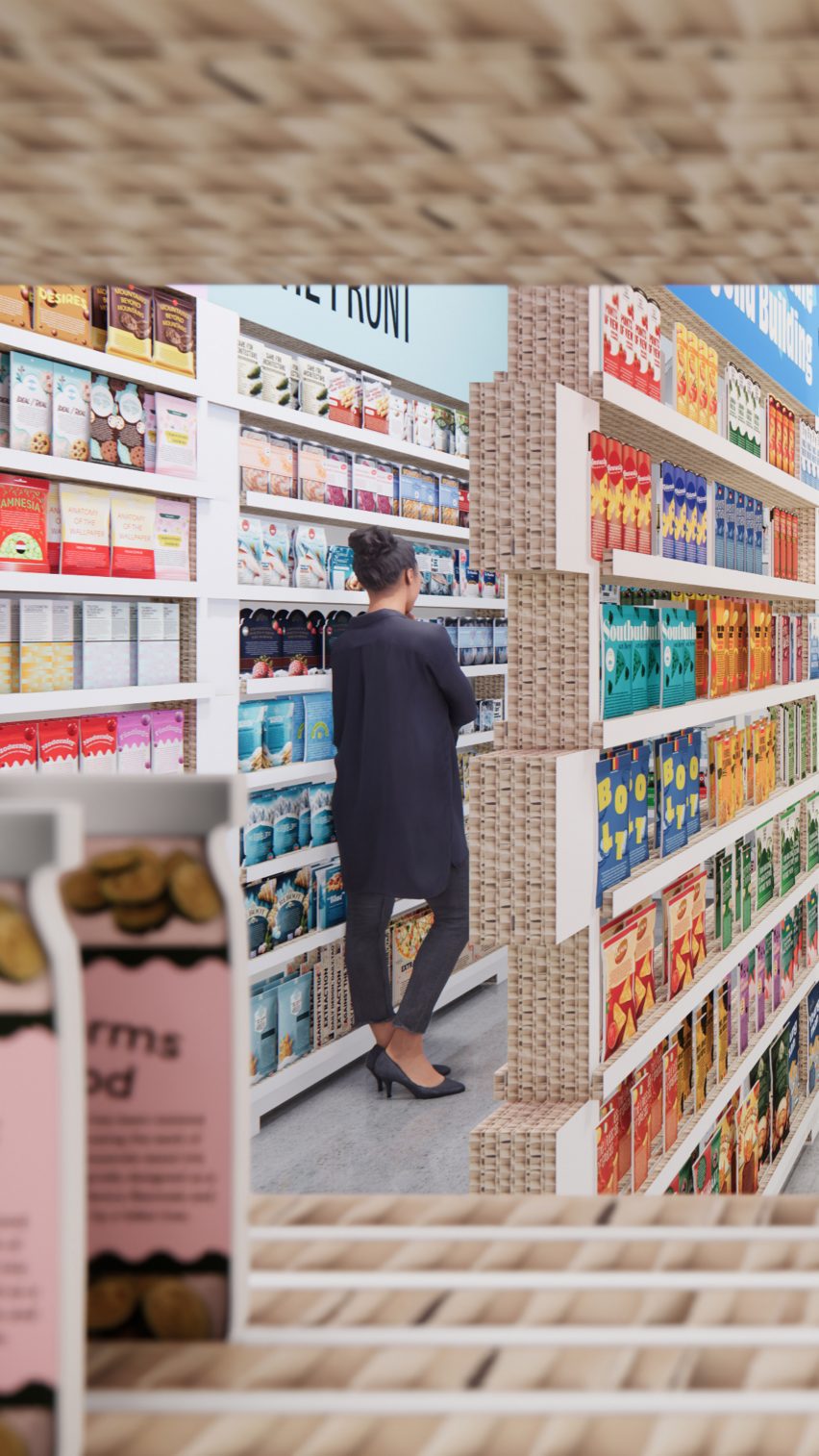
"Our core concept was to create a setting that allows visitors to engage and empathise with previous ideas presented by the authors of national pavilions in a globally recognised and comfortable environment – a supermarket-like atmosphere," said curators Ernests Cerbulis and Uldis Jaunzems-Pētersons.
"By adopting a playful and entertaining approach, the Latvian Pavilion aims to capture visitor's attention and focus on the large amounts of ideas produced by the architecture exhibition itself," they told Dezeen.
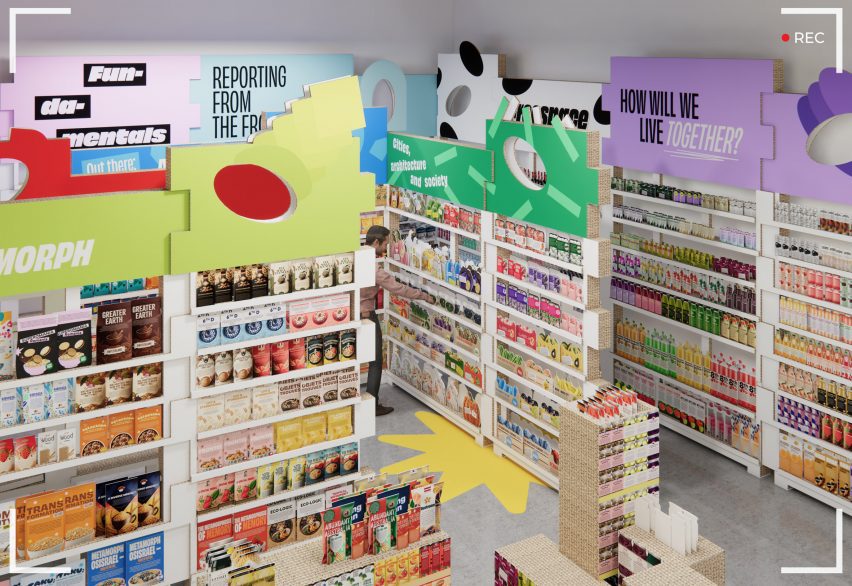
The fake food and household products are all displayed in aisles named after previous Venice Architecture Biennale themes such as Fundamentals, the 2014 event directed by architect Rem Koolhaas, and How will we live together? curated by architect Hashim Sarkis in 2021.
They were designed with the help of artificial intelligence, which enabled the team to create all the products in a short time period while maintaining a consistent visual identity.
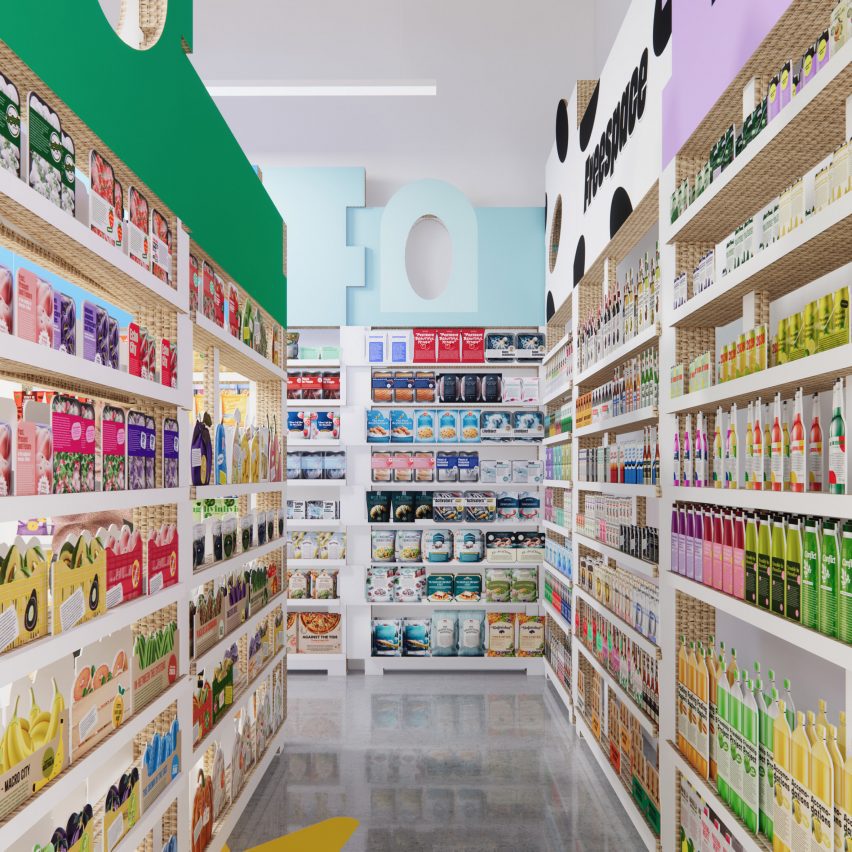
Visitors are invited to engage with the pavilion in several ways. Firstly, they can select their favourite products off the shelves and "buy" them at a till before receiving a receipt at checkout. They can also pick their favourite exhibition from the previous ten by throwing a ball into openings in signage above shelves.
Or for those that can't visit in person, the stock is all uploaded to view online at the pavilion's website.
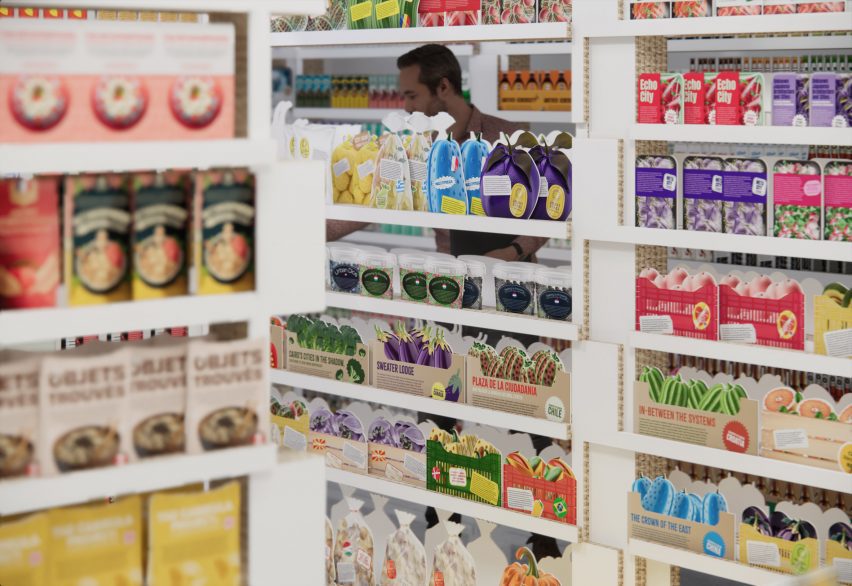
This year's theme for the Venice Architecture Biennale is The Laboratory of the Future, which has been curated by architect Lesley Lokko. It primarily explores themes of decarbonisation and decolonisation.
According to Cerbulis and Jaunzems-Pētersons, the Latvian Pavilion is intended to offer "an archive within this laboratory".
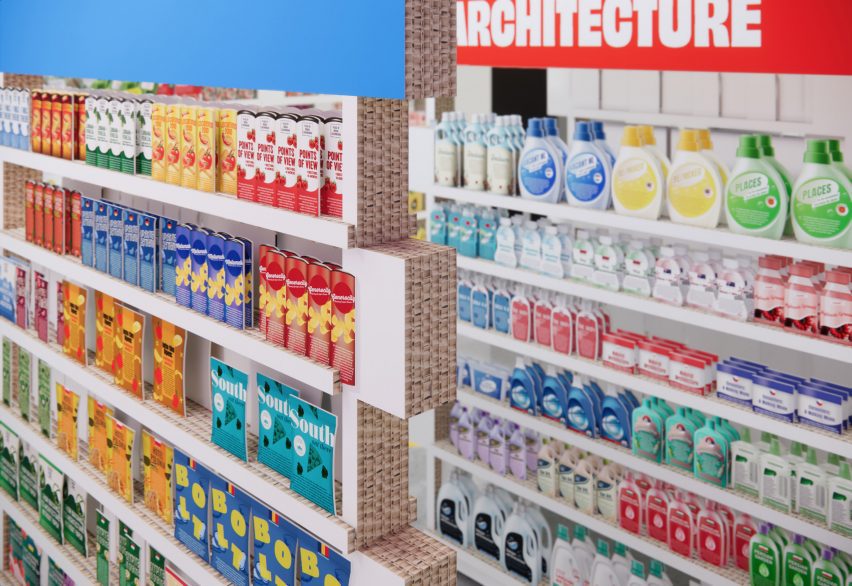
"The Latvian Pavilion provides an archive within this laboratory, featuring over 500 ideas from national participants," the duo said.
"It's not intended to be didactic or educational but rather to encourage personal reflection and interaction."
This year's biennale also placed a special focus on sustainability, with organisers targeting carbon neutrality.
Cerbulis and Jaunzems-Pētersons addressed this in their design of the Latvian pavilion, opting for cardboard as the primary material.
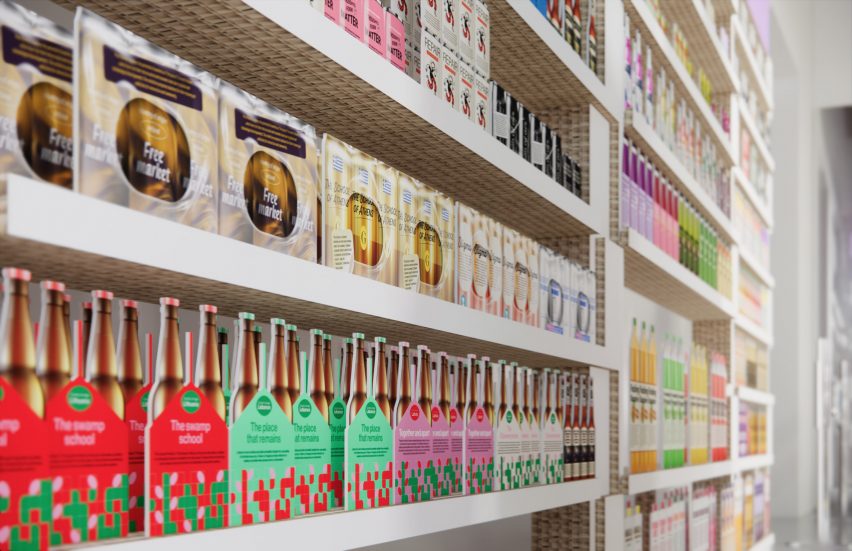
"The pavilion itself was made out of cardboard, and utilised, repurposed shopping mall equipment, helping to reduce material and building costs," the duo said.
"After the closing of the exhibition, the cardboard will be recycled or reused, while the shopping mall equipment will be returned."

Other interactive pavilions at this year's Venice Architecture Biennale include Korea, which takes the form of a quiz show-style game that focuses on social, political and economic issues.
Meanwhile, this year's French Pavilion contains the Ball Theater – a hemispherical stage that is set to host a string of performances over the course of the event.
The photography is by Toms Kampars.
The Venice Architecture Biennale takes place from 20 May to 26 November 2023. See Dezeen Events Guide for all the latest information you need to know to attend the event, as well as a list of other architecture and design events taking place around the world.